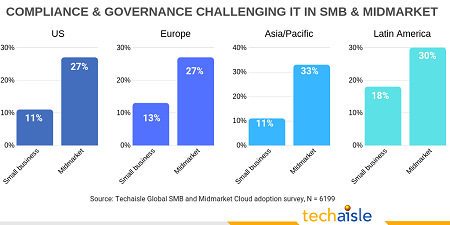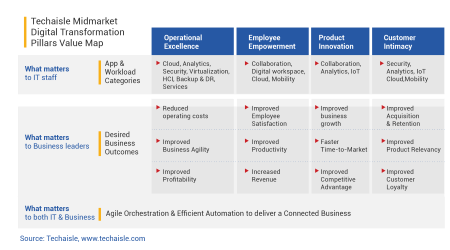Digital transformation success requires that channel partners respond to a diverse set of challenges: the channel organization needs to be able to balance extensive consulting and executive customer management with product transactions, ongoing management services and tangible contribution to customer business success. Those that are able to align their capabilities with digital transformation requirements will be positioned for long-term success in IT’s highest-growth market. Techaisle’s digital transformation (DX) framework highlights six ways that channel partners can profitably connect with customers in their initial stages of the DX journey. At the beginning of the DX journey, channel partners should plan to deliver billable services in foundational technology areas:
- Deployment of discrete foundation technologies needed to enable pursuit of DX business objectives: The requirement for these technologies should be clearly associated with capabilities needed within the DX roadmap; the systems themselves should be prioritized in accordance with the benefits that they deliver.
- Provision of management/support for technology tied to the DX roadmap: In this step it is essential for channel partners to increase customer communication so that they understand the value associated with ongoing support and integration that maintains the currency of the DX platform by managing its discrete IT components.
- Development and delivery of incremental feature/function objectives: Some of the technologies deployed within the DX framework may provide all needed functionality ‘out of the box,’ while others may benefit from ongoing enhancements. In these latter cases, both channel partners and their customers will benefit from the addition of features that provide incremental benefit to users/organizations that have absorbed current capability and who are ready for, and have need for, additional functionality.
Once the foundational level is in place and immediate benefits of the technology have been identified and communicated as ‘success stories’ within the customer organization, the channel partner should help the customer move on to the next DX level: establishment of connected ‘Interwork’ systems. Here, channel partner opportunities expand to include higher-value activities:













